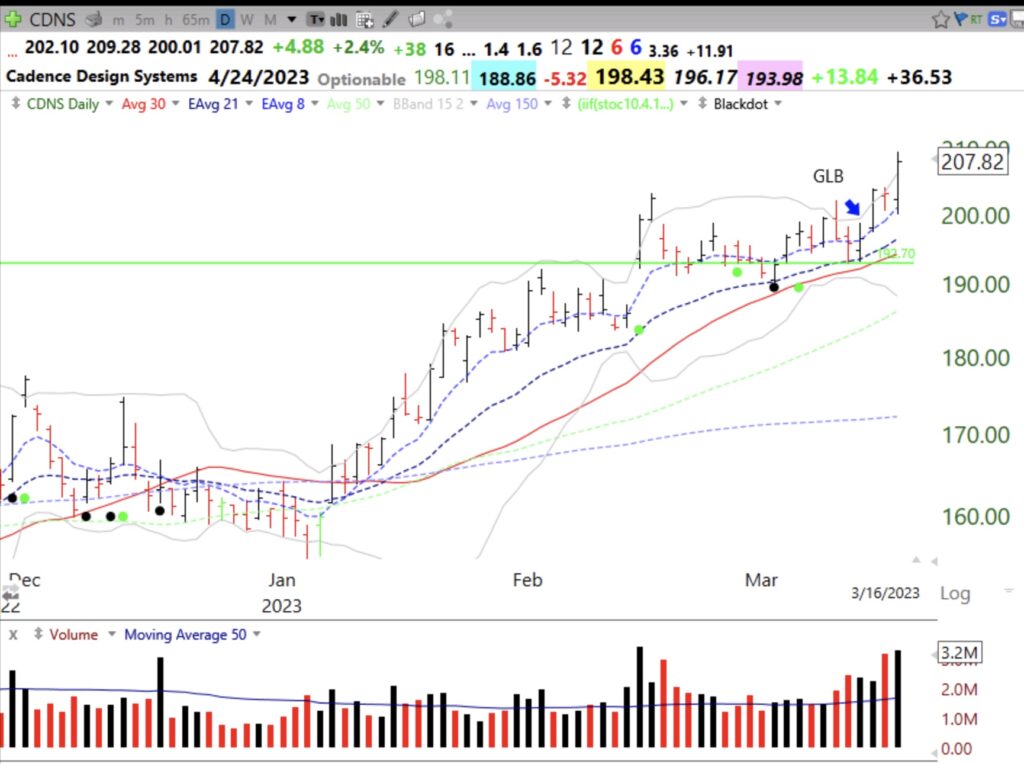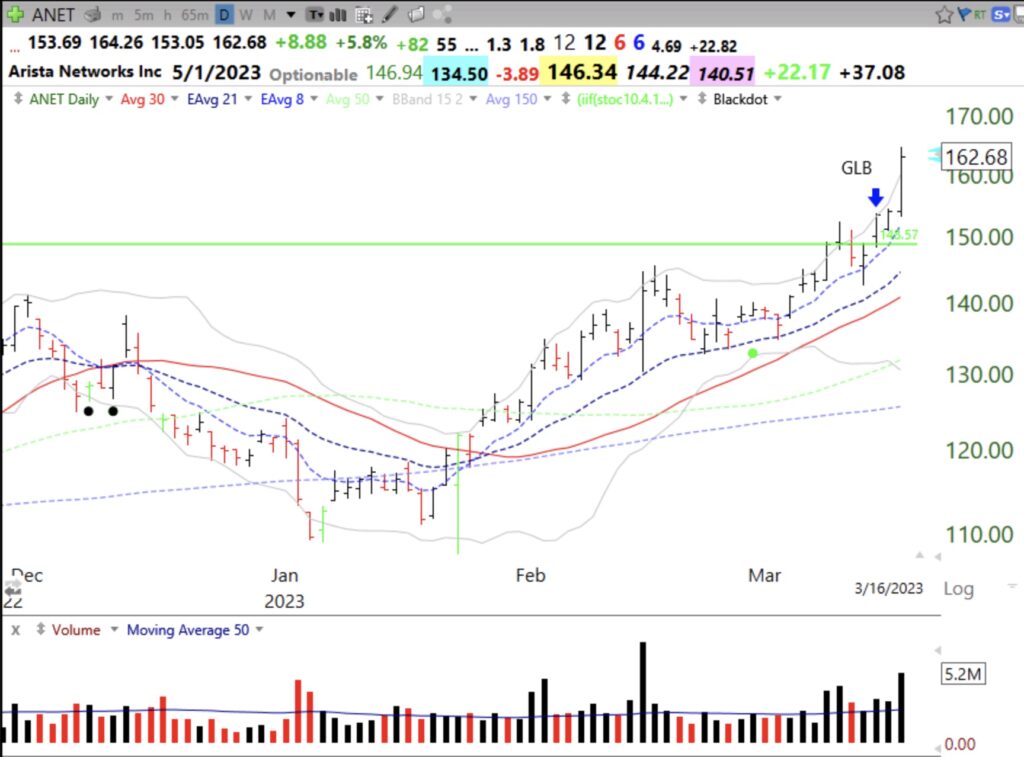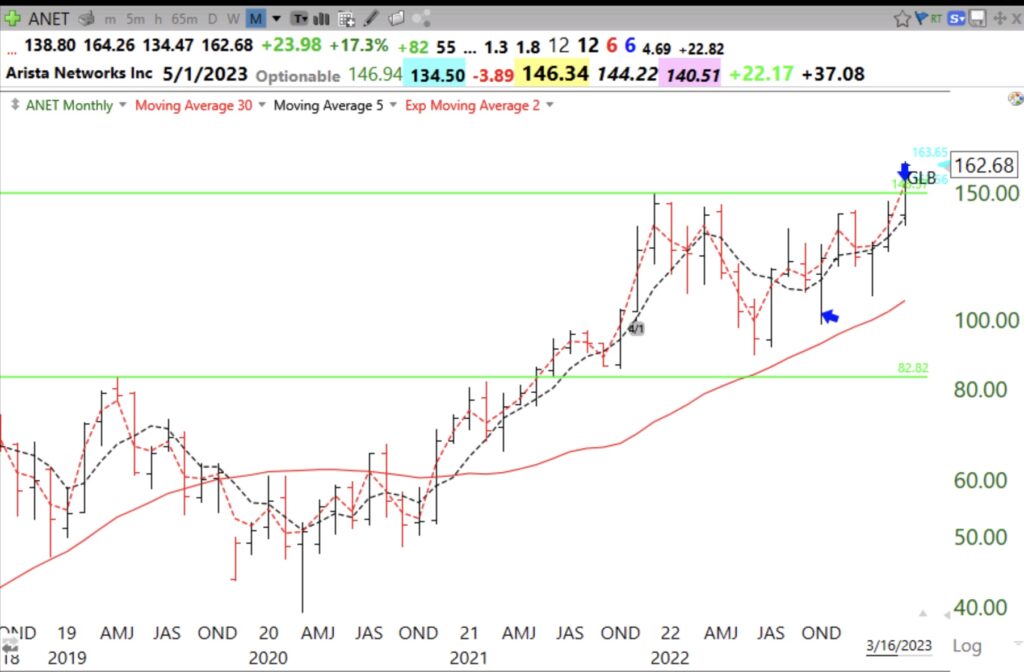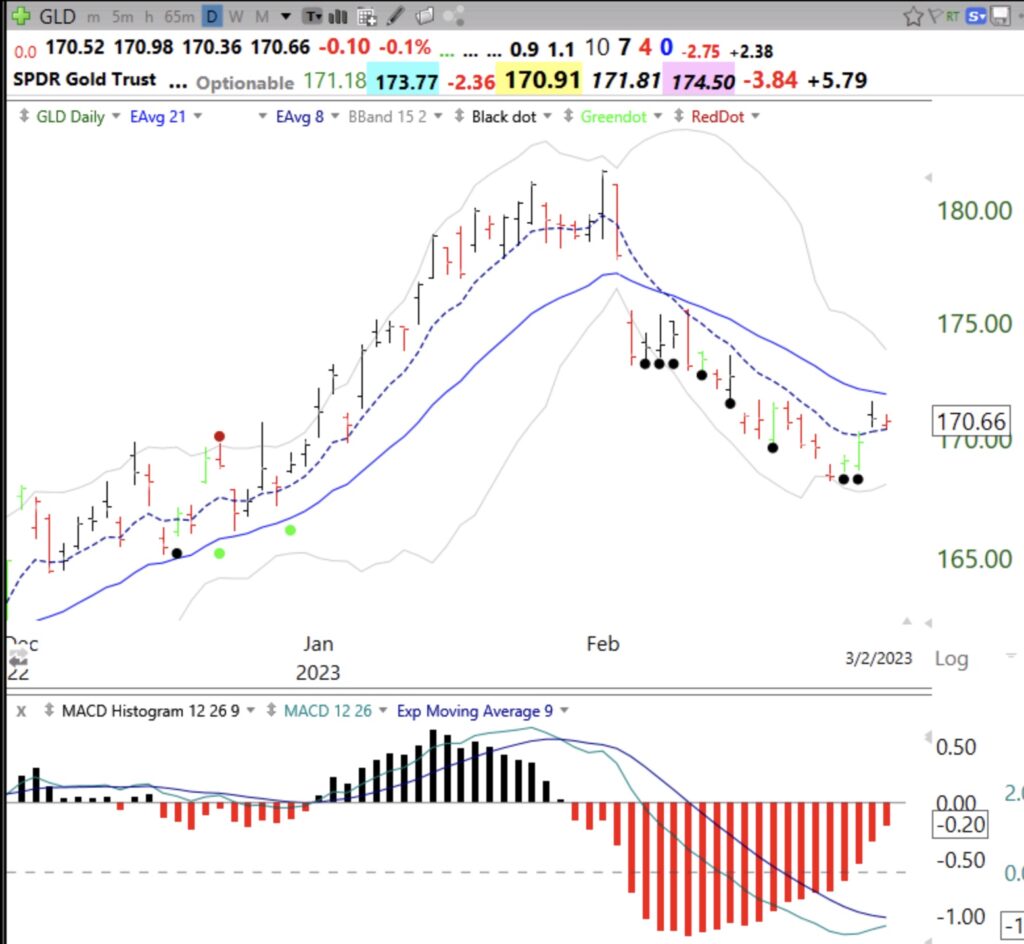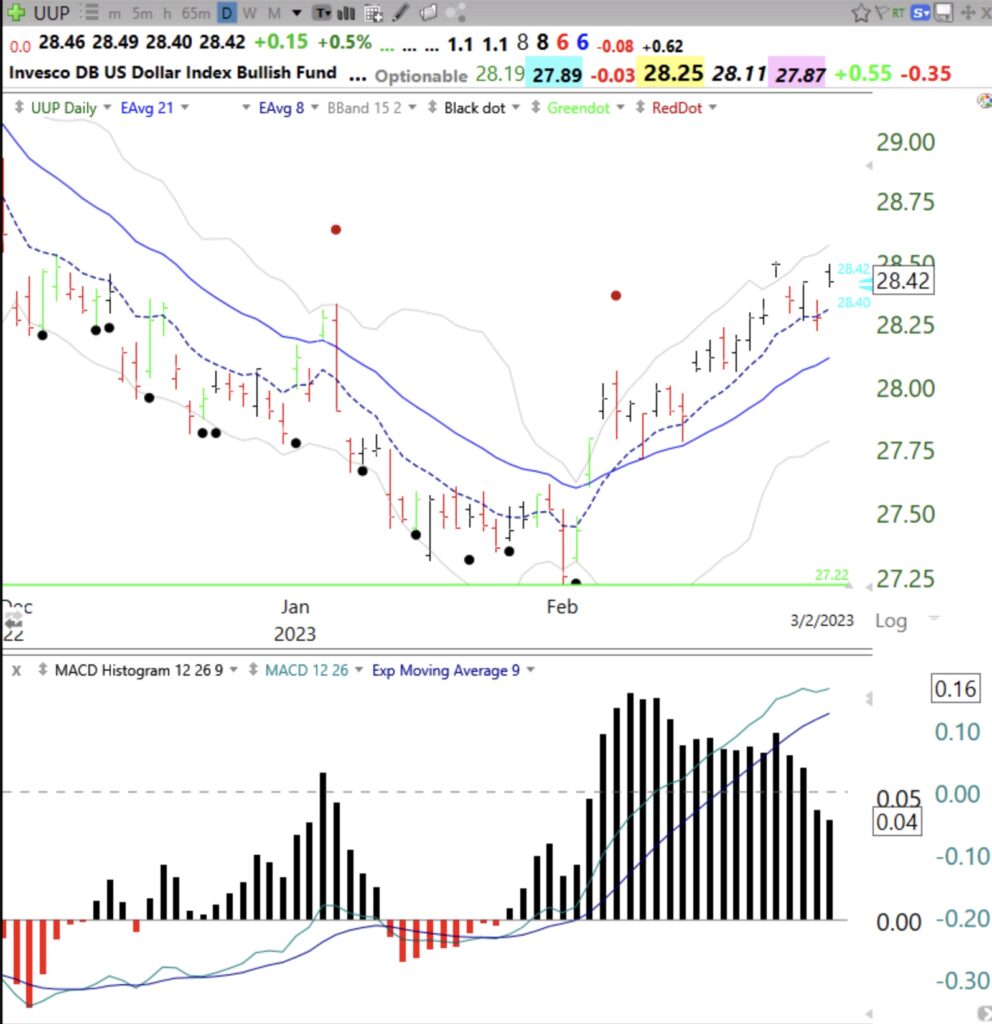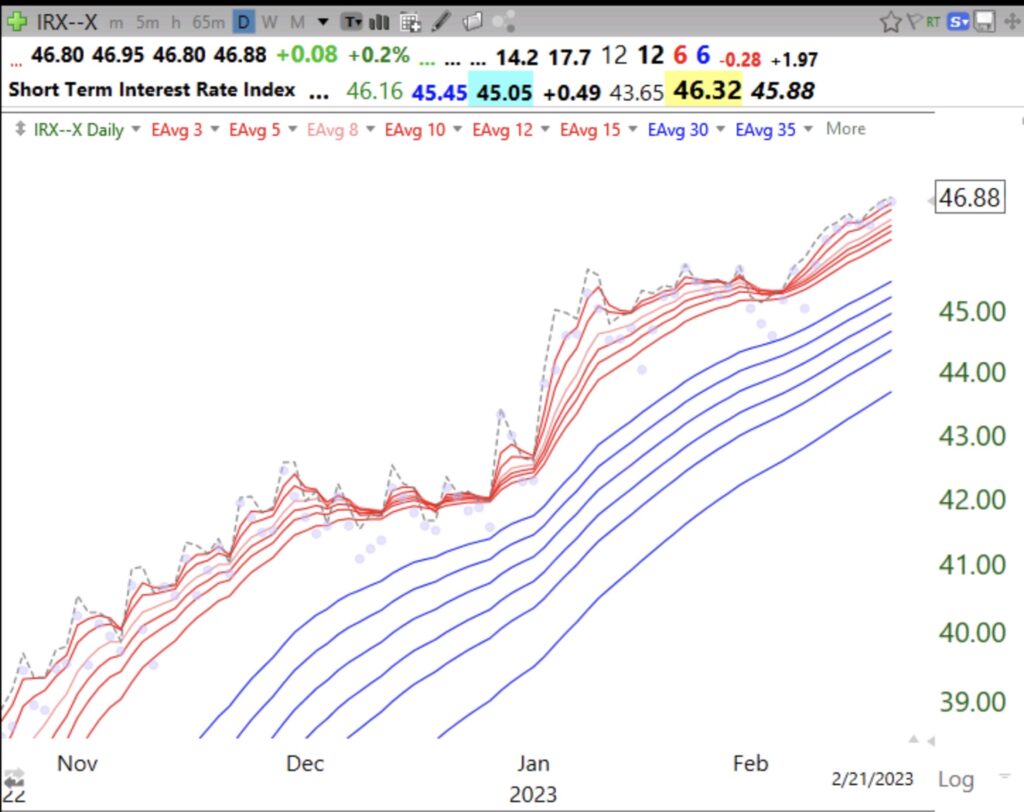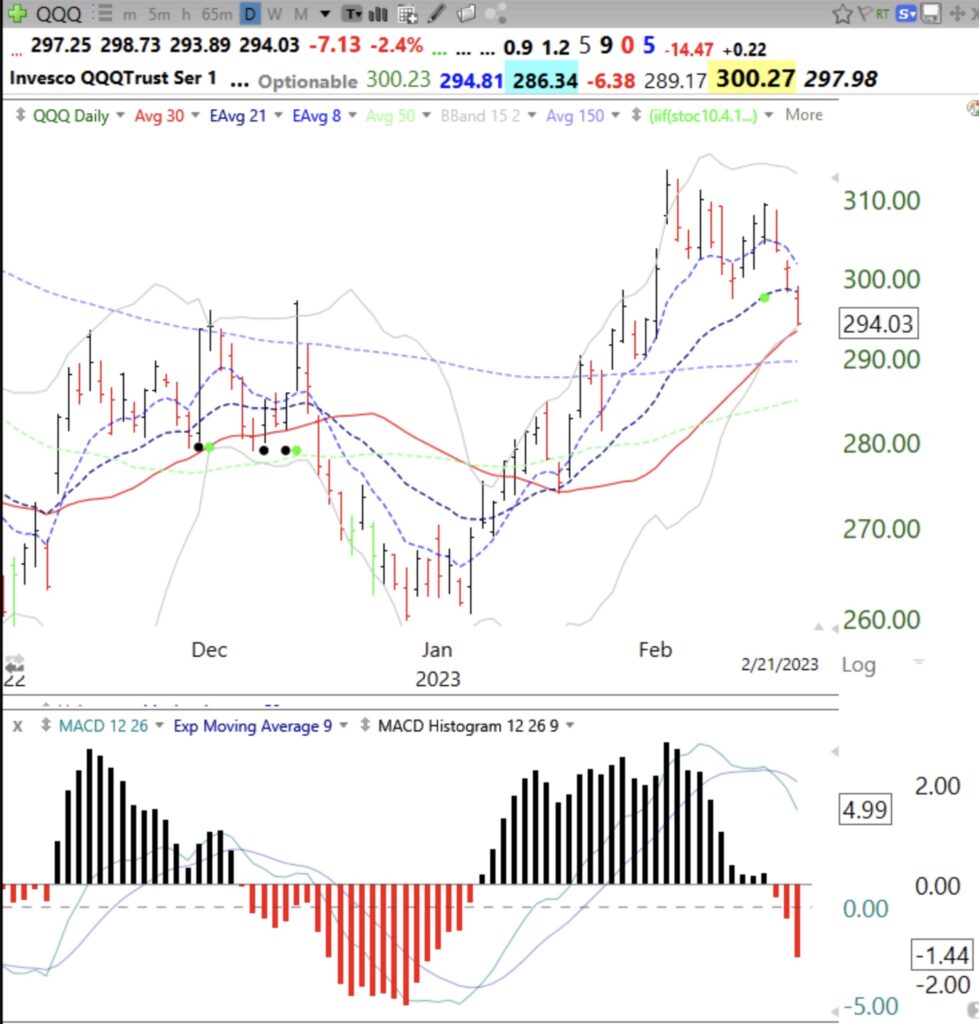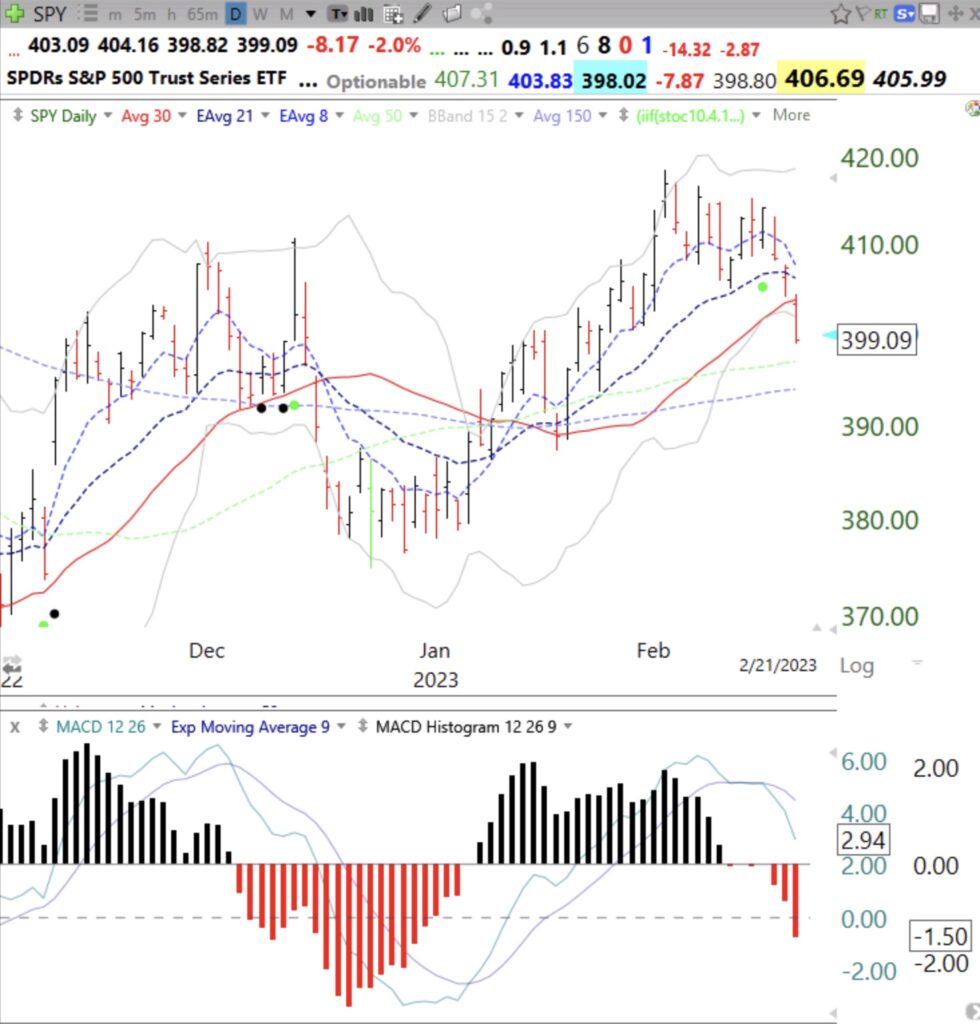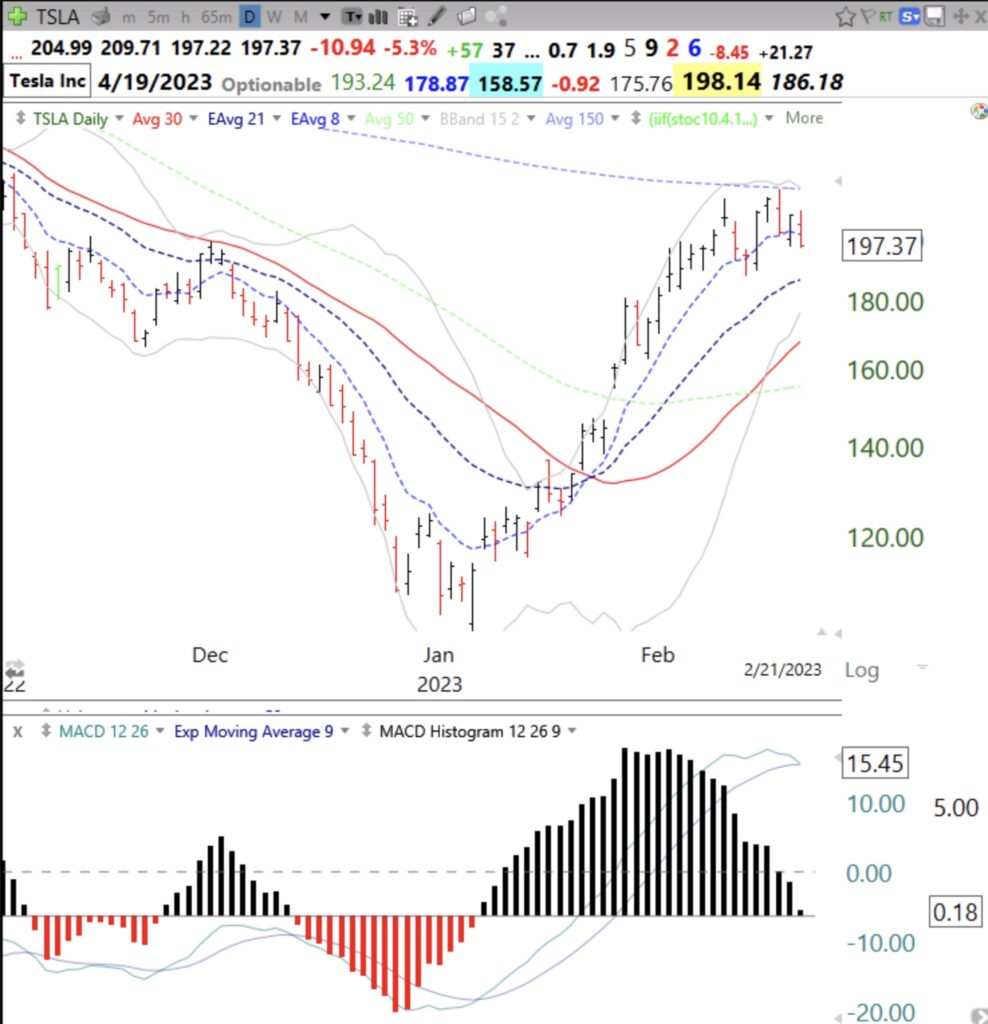My Green Line Breakout (GLB) indicator is for me a great way to identify leading stocks. On a monthly chart I draw a horizontal green line on the top of the price bar that reached an all-time-high (ATH) that had not been surpassed for at least 3 months (3 bars). Think of it as a rocket that has climbed to a peak and then rested for at least 3 months. When the stock finally closes above the green line, a GLB, it can be the start of a major advance because the stock has overcome all of the selling by persons who had bought near the higher prior peak. I showed in my Trader Lion 2022 presentation that most of William O’Neil’s huge winners had begun with a GLB. After a bear market, the number of stocks near an ATH are few. The last 5 days have had fewer than 10 out of more than 6,000 US stocks trading each day at ATHs. (I don’t count stocks under $20 or with negligible volume). Once the GLB occurs, hopefully on above average volume, if I bought, I sell if the stock CLOSEs below the green line. That is a failed GLB. If the stock retakes the green line the rise may resume and I may buy it back. See these daily charts for examples. CDNS had several GLBs which failed and then found support along the green line. ANET also had a failed GLB before taking off.
This monthly chart shows where I draw the green lines. Once I draw a green line I place an alert in TC2000 to tell me when the stock trades through it.
